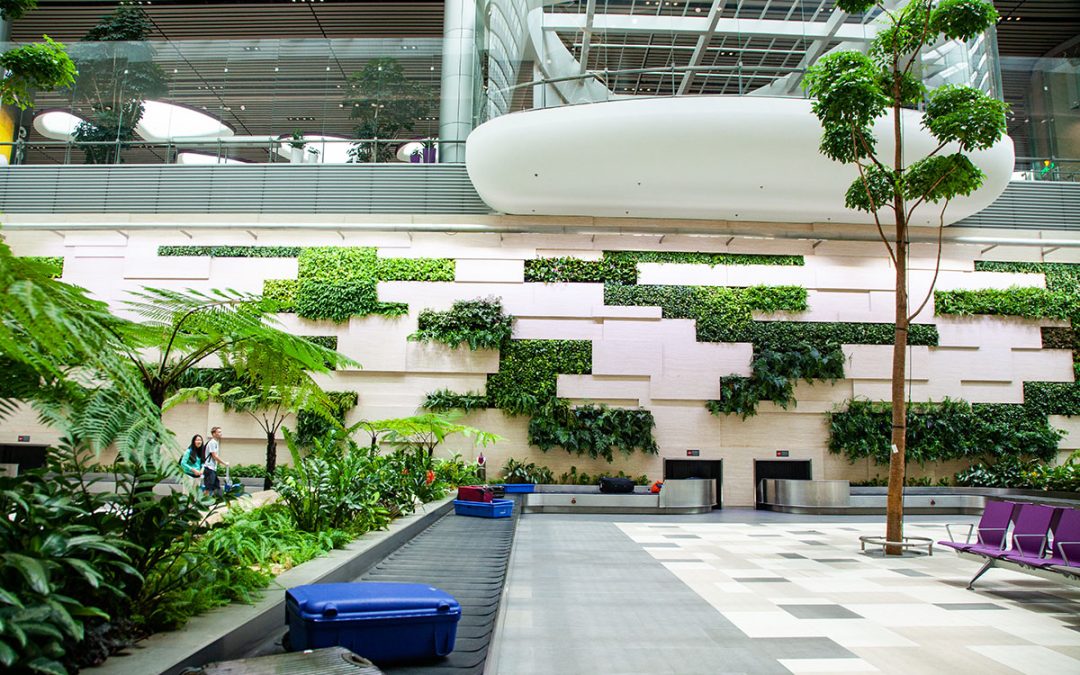Biophilic design is an innovative architectural and interior design approach that seeks to reconnect people with nature in the built environment. As our urban spaces become more densely populated and disconnected from natural ecosystems, biophilic design emphasizes the importance of integrating elements of the natural world into our homes, workplaces, and public spaces to improve overall well-being, productivity, and creativity.
At its core, biophilic design recognizes the innate human connection to nature, known as “biophilia.” This term, popularized by biologist Edward O. Wilson in the 1980s, refers to the idea that humans have an inherent affinity for the natural world. Biophilic design leverages this concept to create spaces that promote physical and mental health while fostering a deeper connection to our environment.
Key Principles of Biophilic Design
Biophilic design goes beyond simply adding plants to a room. It’s a holistic approach that involves various principles and strategies to mimic and integrate natural elements. These principles can be categorized into three main components: direct experiences of nature, indirect experiences of nature, and spatial configurations inspired by nature.
1. Direct Experiences of Nature
This involves incorporating actual natural elements into a space. Examples include:
- Natural Light: Maximizing sunlight through large windows, skylights, and open layouts.
- Indoor Plants: Including greenery like potted plants, vertical gardens, or moss walls.
- Water Features: Integrating fountains, aquariums, or other water elements to provide a calming sensory experience.
- Natural Airflows: Utilizing ventilation systems that mimic outdoor breezes.
2. Indirect Experiences of Nature
When direct integration of nature isn’t feasible, indirect elements can still evoke a sense of connection. Examples include:
- Natural Materials: Using wood, stone, bamboo, or other organic materials in furniture and finishes.
- Colors and Patterns: Incorporating natural colors like earth tones and patterns inspired by leaves, waves, or animal textures.
- Artwork and Imagery: Displaying paintings, photographs, or digital visuals of landscapes and wildlife.
- Biomorphic Design: Crafting furniture and structures with shapes and forms that resemble those found in nature, such as curved edges or tree-like structures.
3. Spatial Configurations Inspired by Nature
The way space is arranged also plays a crucial role in biophilic design:
- Refuge Spaces: Creating cozy, quiet areas for relaxation, similar to natural shelters like caves or groves.
- Prospect Views: Offering expansive views that mimic open landscapes, such as placing seating near windows overlooking a garden.
- Dynamic and Diffuse Lighting: Mimicking the changing patterns of sunlight throughout the day.
- Integration with the Outdoors: Blurring the boundaries between indoor and outdoor spaces with open patios, rooftop gardens, or large glass walls.
Benefits of Biophilic Design
Biophilic design has far-reaching benefits for both individuals and communities. Research shows that incorporating nature into the built environment has profound effects on health, well-being, and overall quality of life.
1. Improved Mental Health
Natural elements reduce stress, anxiety, and depression. Studies reveal that exposure to greenery and natural light can lower cortisol levels and enhance mood. Biophilic spaces also promote mindfulness and emotional balance.
2. Enhanced Productivity and Creativity
Workspaces that incorporate biophilic design elements often see increased productivity and creativity. Employees in offices with natural light and plants report higher satisfaction, better focus, and improved problem-solving abilities.
3. Better Physical Health
Biophilic design supports physical well-being by improving air quality, reducing noise pollution, and encouraging movement. For example, incorporating stairs with natural materials or placing walking paths in offices can promote a healthier lifestyle.
4. Strengthened Connection to Nature
In urban settings, biophilic design helps counteract “nature deficit disorder,” a term describing the disconnection from the natural world that many people experience. This connection fosters a sense of environmental responsibility and appreciation.
5. Increased Property Value
For businesses and homeowners, biophilic design can also be an attractive investment. Spaces that integrate natural elements are often perceived as more inviting and luxurious, increasing their market appeal.
Applications of Biophilic Design
Biophilic design can be implemented in various environments, from residential and commercial spaces to healthcare and educational facilities.
1. Residential Spaces
Homeowners can create a peaceful retreat by incorporating biophilic elements such as indoor plants, natural materials, and large windows that let in ample sunlight. Rooftop gardens or outdoor terraces can further enhance the connection to nature.
2. Workplaces
Biophilic offices are designed to boost employee well-being and productivity. Features like living walls, open layouts with natural lighting, and calming water features create an environment conducive to focus and creativity.
3. Schools
Educational facilities that integrate natural elements improve student performance and reduce stress. Classrooms with views of nature, outdoor learning spaces, and interiors made with sustainable materials can create a nurturing environment for young minds.
4. Healthcare Facilities
Hospitals and clinics benefit significantly from biophilic design. Access to natural light, green spaces, and soothing artwork can accelerate recovery times and reduce stress for patients and staff alike.
5. Public Spaces
Parks, libraries, and community centers can use biophilic principles to foster social interaction and improve community well-being. Urban planners can integrate green roofs, walking trails, and water features into public infrastructure.
Embracing Biophilic Design in Everyday Life
Adopting biophilic design doesn’t have to be an extensive renovation project. Small changes can make a big difference. For instance, adding plants to your home or office, using natural materials in décor, or rearranging furniture to maximize sunlight are simple ways to integrate biophilic elements.
Conclusion
Biophilic design is more than a trend—it’s a transformative approach to creating environments that support human health and well-being. By reestablishing our connection to nature, biophilic spaces enhance our quality of life while fostering sustainability and environmental stewardship. As cities grow and urbanization continues, biophilic design offers a pathway to harmonious living with the natural world, ensuring that our built environments remain places of comfort, inspiration, and vitality.

